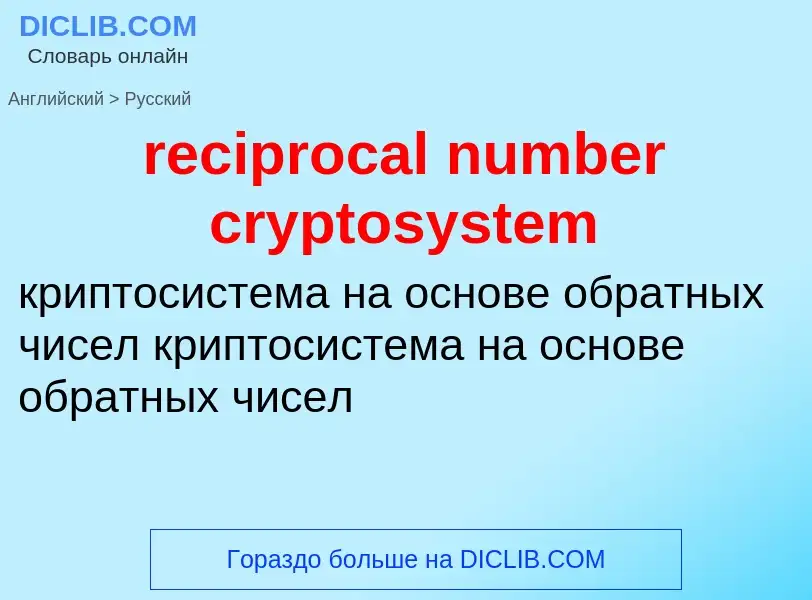Traduction et analyse des mots par intelligence artificielle
Sur cette page, vous pouvez obtenir une analyse détaillée d'un mot ou d'une phrase, réalisée à l'aide de la meilleure technologie d'intelligence artificielle à ce jour:
- comment le mot est utilisé
- fréquence d'utilisation
- il est utilisé plus souvent dans le discours oral ou écrit
- options de traduction de mots
- exemples d'utilisation (plusieurs phrases avec traduction)
- étymologie
reciprocal number cryptosystem - traduction vers russe
математика
двойственный базис
математика
обратная функция
Wikipédia
The Damgård–Jurik cryptosystem is a generalization of the Paillier cryptosystem. It uses computations modulo where is an RSA modulus and a (positive) natural number. Paillier's scheme is the special case with . The order (Euler's totient function) of can be divided by . Moreover, can be written as the direct product of . is cyclic and of order , while is isomorphic to . For encryption, the message is transformed into the corresponding coset of the factor group and the security of the scheme relies on the difficulty of distinguishing random elements in different cosets of . It is semantically secure if it is hard to decide if two given elements are in the same coset. Like Paillier, the security of Damgård–Jurik can be proven under the decisional composite residuosity assumption.

